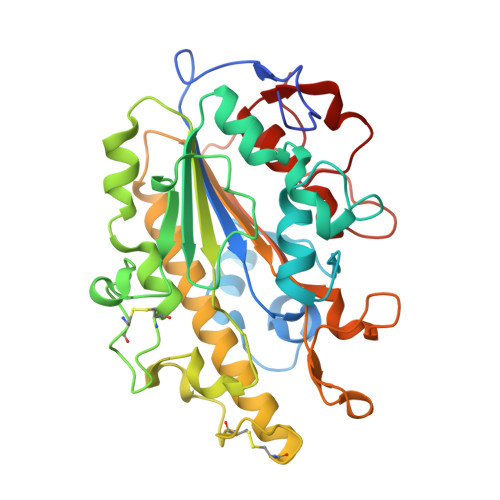Substrate Recognition by a Colistin Resistance Enzyme from Moraxella catarrhalis.
Stogios, P.J., Cox, G., Zubyk, H.L., Evdokimova, E., Wawrzak, Z., Wright, G.D., Savchenko, A.(2018) ACS Chem Biol 13: 1322-1332
- PubMed: 29631403
- DOI: https://doi.org/10.1021/acschembio.8b00116
- Primary Citation of Related Structures:
6BNC, 6BND, 6BNE, 6BNF - PubMed Abstract:
Lipid A phosphoethanolamine (PEtN) transferases render bacteria resistant to the last resort antibiotic colistin. The recent discoveries of pathogenic bacteria harboring plasmid-borne PEtN transferase ( mcr) genes have illustrated the serious potential for wide dissemination of these resistance elements. The origin of mcr-1 is traced to Moraxella species co-occupying environmental niches with Enterobacteriaceae. Here, we describe the crystal structure of the catalytic domain of the chromosomally encoded colistin resistance PEtN transferase, ICR Mc (for intrinsic colistin resistance) of Moraxella catarrhalis. The ICR Mc structure in complex with PEtN reveals key molecular details including specific residues involved in catalysis and PEtN binding. It also demonstrates that ICR Mc catalytic domain dimerization is required for substrate binding. Our structure-guided phylogenetic analysis provides sequence signatures defining potentially colistin-active representatives in this enzyme family. Combined, these results advance the molecular and mechanistic understanding of PEtN transferases and illuminate their origins.
- Center for Structural Genomics of Infectious Diseases (CSGID).
Organizational Affiliation:




















